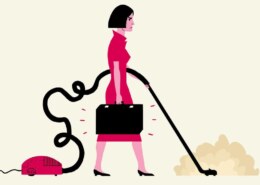“I raise up my voice—not so I can shout, but so that those without a voice can be heard.” – Malala Yousafzai I believe that women are still a vulnerable section of the society as they are easy targets for harassment and suppression and also their inability to make decisions on economic level furtherRead more
“I raise up my voice—not so I can shout, but so that those without a voice can be heard.” – Malala Yousafzai
I believe that women are still a vulnerable section of the society as they are easy targets for harassment and suppression and also their inability to make decisions on economic level further exacerbates their vulnerability.
Different frameworks have been used to define vulnerable women. Conventionally, such women have been identified based on income falling below the acceptable benchmark of welfare, along with other demographic characteristics such as ethnicity, education level, and locale – rural versus urban status.
There are various reasons why women are still identified as vulnerable. Here are some:
- Even in the 21st century, there is a section of society that considers women as only an object and only a means to produce children and serving husbands and the family members.
- While the first world has extraordinary scientific and technological advances, some women in rural areas in India are still struggling to get the basic healthcare facility which forces them to opt for home births which brings a lot of risk for mothers and the newborn.
- In terms of decision making, most of the power is still invested with the male members of the family, making women just a follower than the decision maker of the society.
- The patriarchal mindset still wants baby boys instead of baby girls which leads to female foeticide. Example: Men in the states of Haryana and Punjab are already experiencing a nearly 20% deficit of marriageable women due to female foeticide.
- In terms of freedom and choice, women are still questioned on their choice of clothing, marital status, habits and behavior. People always try to chain them into some social norms. Example: Women wearing short dresses are labelled as characterless while single independent women are considered hypermasculine in her approach.
- In modern contemporary India also, we see women being subject to humiliation and harassment on account of rejecting the proposal of any boy. It is unfortunate that there have been brutal instances that women had to face like eve-teasing, acid attack, rape and others as a consequence to not
- Beside this, there are several things like employment where women are still a less preferred choice on account of her marriage, maternity, etc. This is often equated with her being less productive at work.
In conclusion, no matter how much we try to sugarcoat but in this patriarchal society, women are still a vulnerable section in terms of cultural, economic and
religious roots. However, building supportive communities and network of support is also crucial in empowering women through vulnerability. When women can openly share their vulnerabilities in a safe and supportive space, they can navigate the challenges and setbacks, knowing that they are not alone in their journey.


Family support is crucial for maintaining emotional health among elderly individuals. As people age, they often face challenges such as health issues, loneliness, and loss of independence, which can impact their emotional well-being. Family members play a significant role in addressing these challenRead more
Family support is crucial for maintaining emotional health among elderly individuals. As people age, they often face challenges such as health issues, loneliness, and loss of independence, which can impact their emotional well-being. Family members play a significant role in addressing these challenges and providing essential support. Here’s how:
Family support is essential for elderly emotional health. It offers companionship, reduces stress, aids in health management, promotes social interaction, and provides stability during crises, significantly enhancing their quality of life.
See less